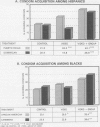Abstract
OBJECTIVES. This study assessed the impact of video-based educational interventions on condom acquisition among men and women seeking services at a large sexually transmitted disease clinic in the South Bronx, New York. METHODS. During 1992, 3348 African American and Hispanic patients were enrolled in a clinical trial of video-based interventions designed to promote safer sex behaviors, including increased condom use. Patients were assigned to one of three groups: control, video, or video plus interactive group discussion. Subjects were given a coupon to redeem for free condoms at a pharmacy several blocks from the clinic. Rates of condom acquisition were assessed by level of intervention. RESULTS. In comparison with a control group, subjects who viewed videos were significantly more likely to redeem coupons for condoms (21.2% redemption rate vs 27.6%). However, participation in interactive sessions after video viewing augmented the positive effects of video viewing alone (27.6% redemption rate vs 36.9%). Gender and ethnicity were significantly associated with outcomes. CONCLUSIONS. The condom acquisition are almost doubled with the use of culturally appropriate, video-based interventions. Designed to present minimal disruption to clinical services, these interventions can be implemented in clinics servicing at-risk men and women.
Full text
PDF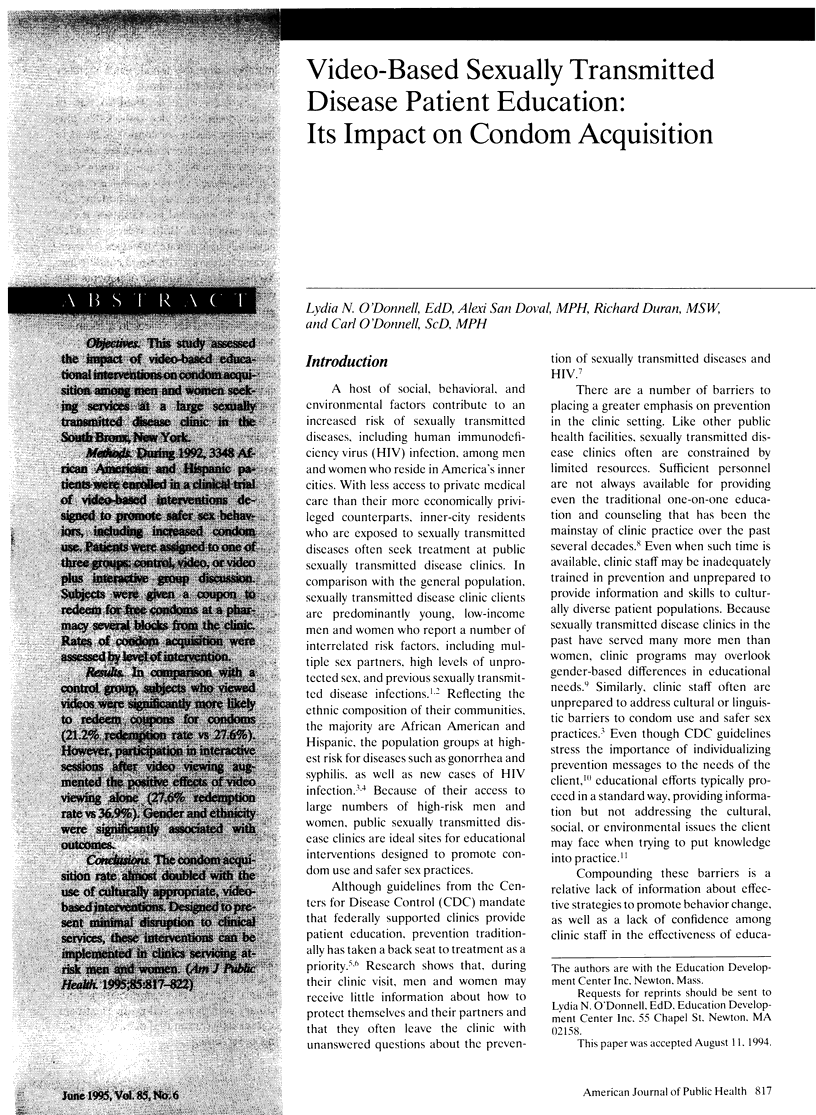
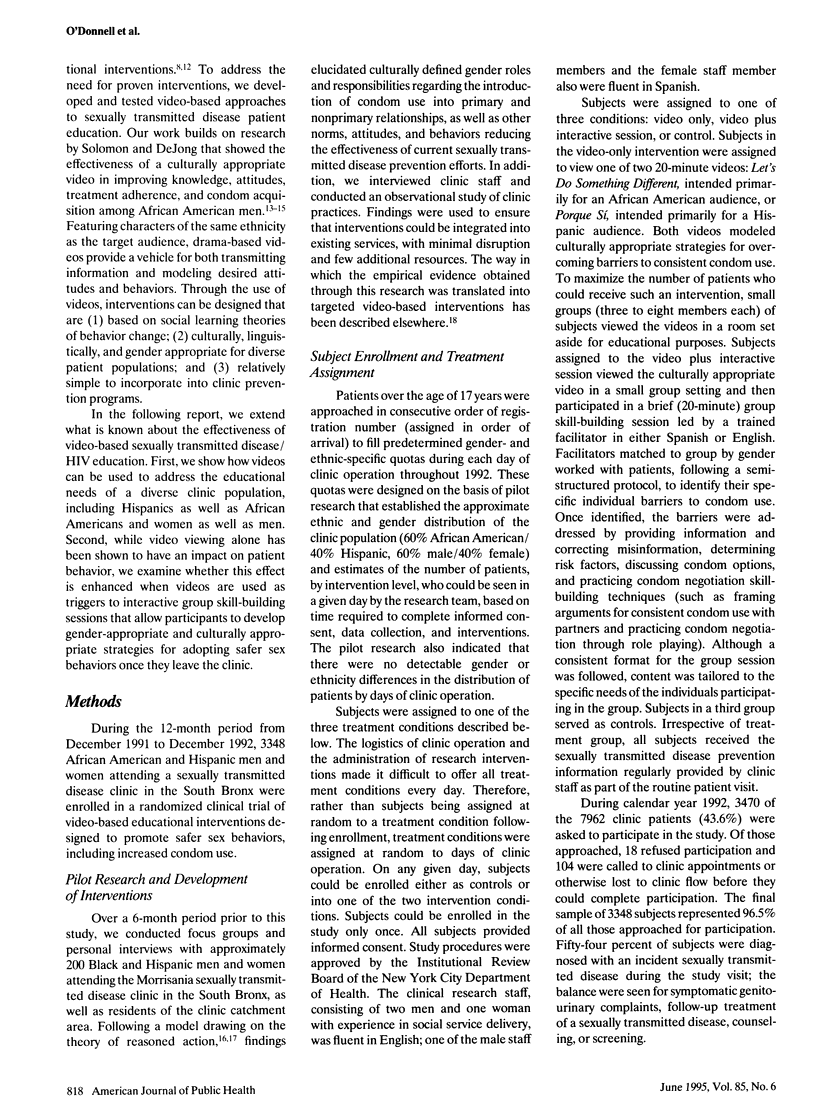
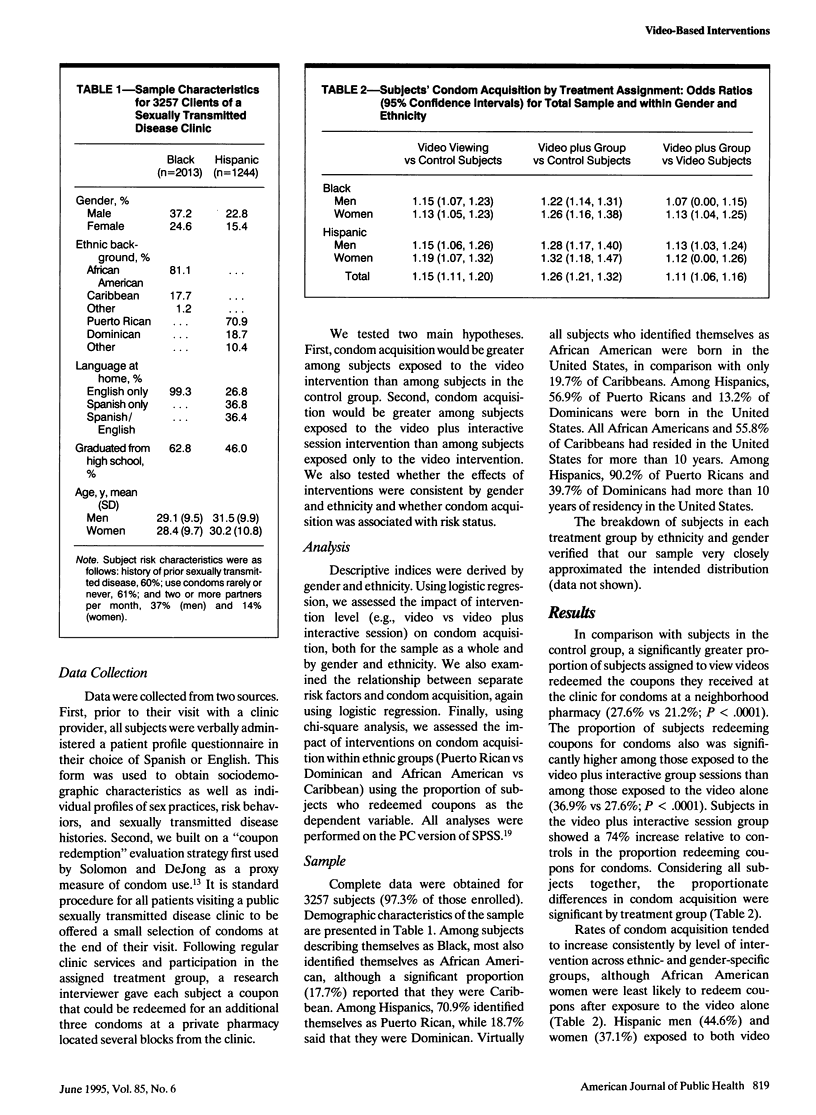
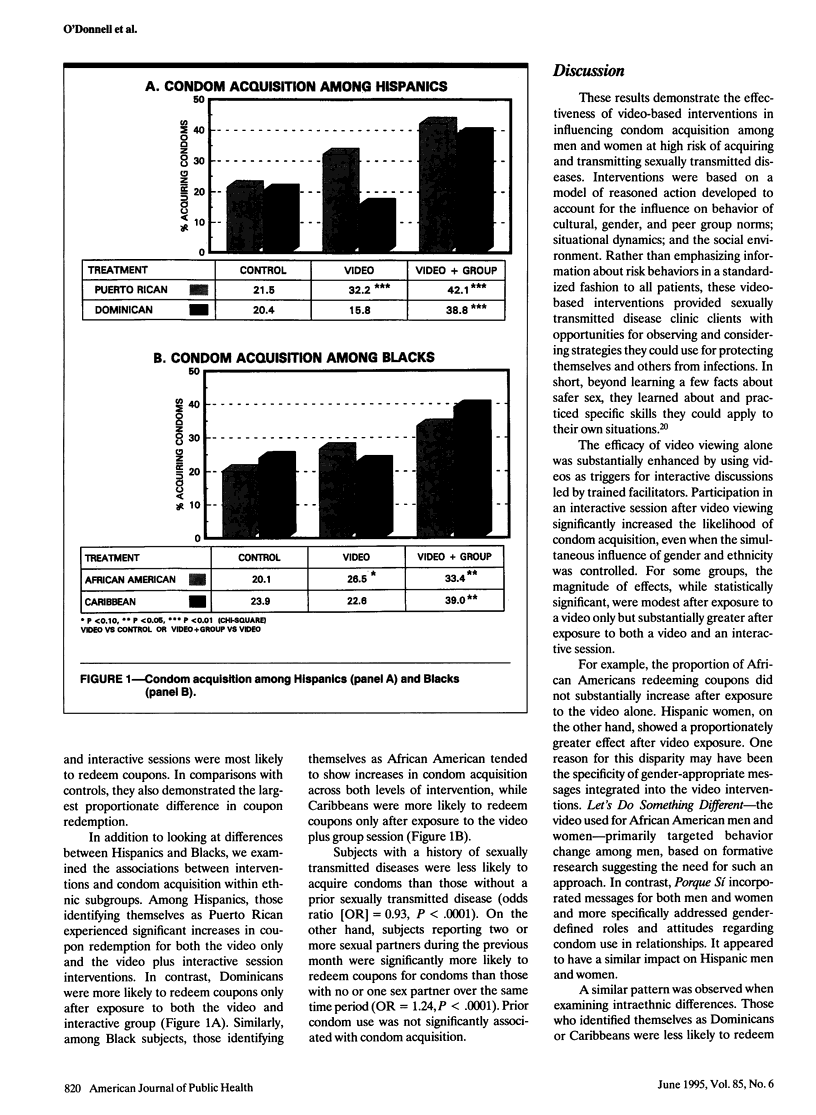
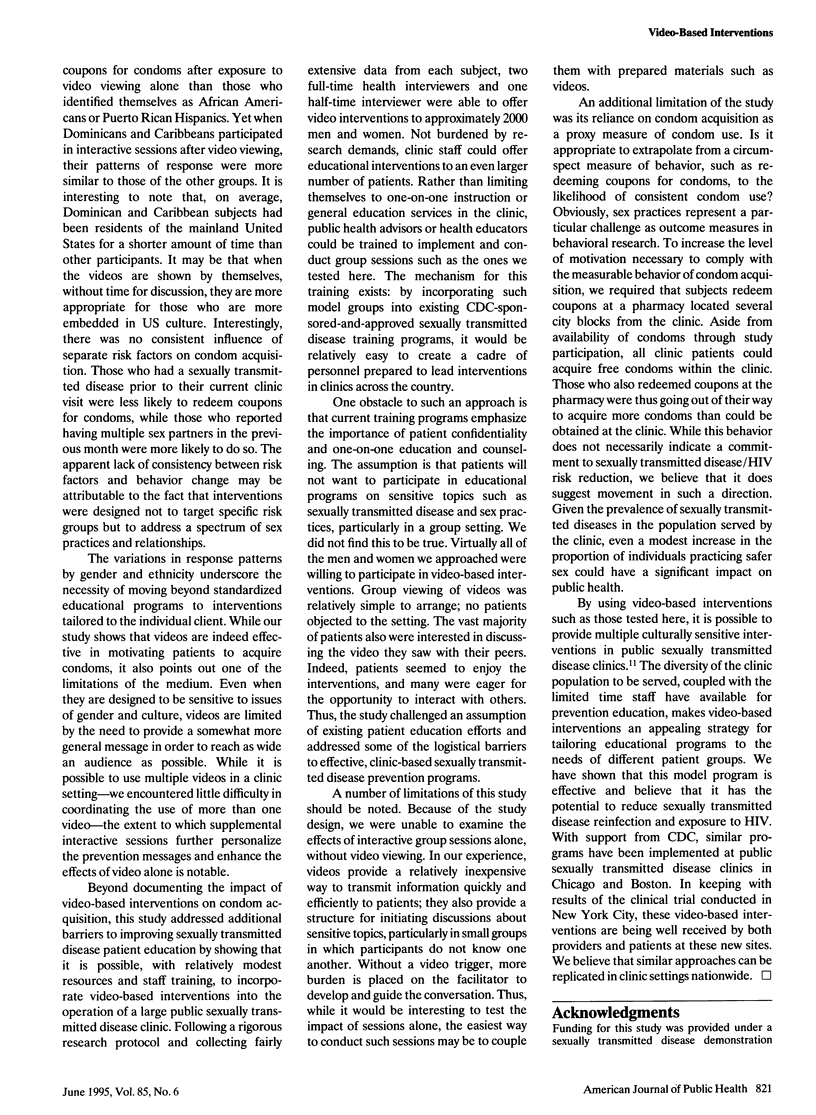
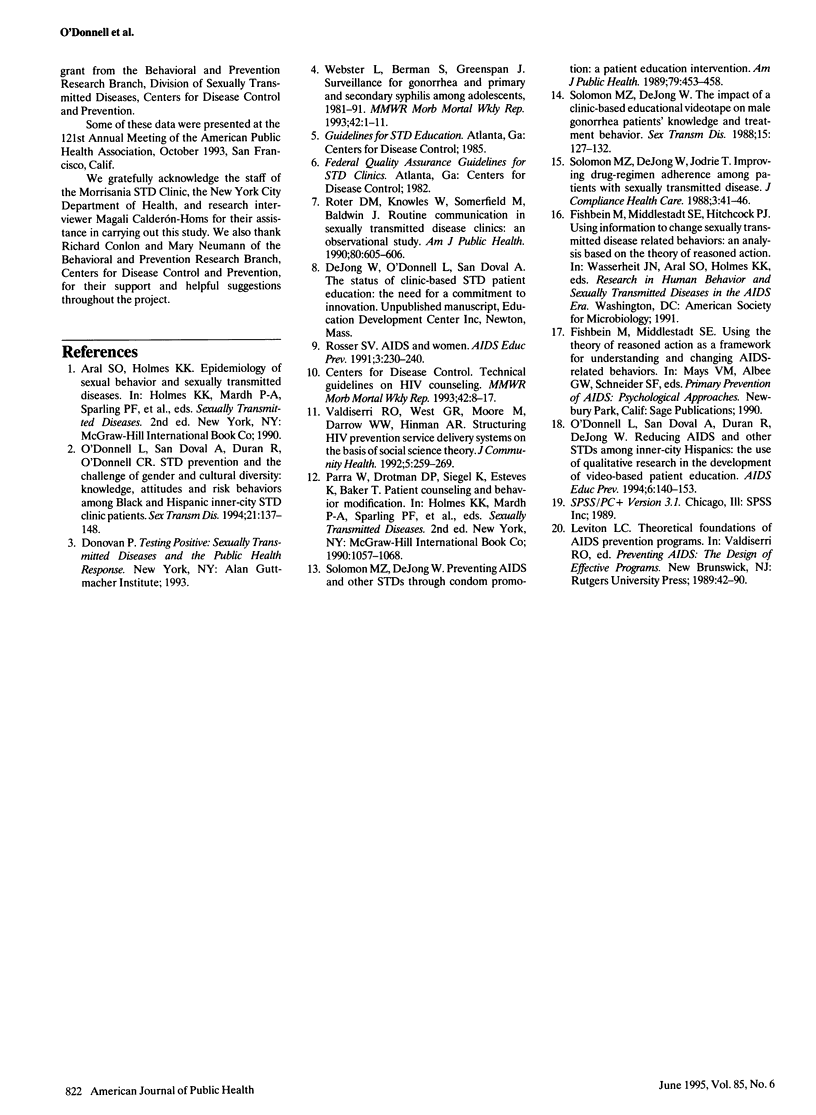
Images in this article
Selected References
These references are in PubMed. This may not be the complete list of references from this article.
- O'Donnell L., San Doval A., Vornfett R., DeJong W. Reducing AIDS and other STDs among inner-city Hispanics: the use of qualitative research in the development of video-based patient education. AIDS Educ Prev. 1994 Apr;6(2):140–153. [PubMed] [Google Scholar]
- O'Donnell L., San Doval A., Vornfett R., O'Donnell C. R. STD prevention and the challenge of gender and cultural diversity: knowledge, attitudes, and risk behaviors among black and Hispanic inner-city STD clinic patients. Sex Transm Dis. 1994 May-Jun;21(3):137–148. doi: 10.1097/00007435-199405000-00003. [DOI] [PubMed] [Google Scholar]
- Rosser S. V. AIDS and women. AIDS Educ Prev. 1991 Fall;3(3):230–240. [PubMed] [Google Scholar]
- Roter D. L., Knowles N., Somerfield M., Baldwin J. Routine communication in sexually transmitted disease clinics: an observational study. Am J Public Health. 1990 May;80(5):605–606. doi: 10.2105/ajph.80.5.605. [DOI] [PMC free article] [PubMed] [Google Scholar]
- Solomon M. Z., DeJong W. Preventing AIDS and other STDs through condom promotion: a patient education intervention. Am J Public Health. 1989 Apr;79(4):453–458. doi: 10.2105/ajph.79.4.453. [DOI] [PMC free article] [PubMed] [Google Scholar]
- Solomon M. Z., DeJong W. The impact of a clinic-based educational videotape on knowledge and treatment behavior of men with gonorrhea. Sex Transm Dis. 1988 Jul-Sep;15(3):127–132. doi: 10.1097/00007435-198807000-00001. [DOI] [PubMed] [Google Scholar]
- Valdiserri R. O., West G. R., Moore M., Darrow W. W., Hinman A. R. Structuring HIV prevention service delivery systems on the basis of social science theory. J Community Health. 1992 Oct;17(5):259–269. doi: 10.1007/BF01324356. [DOI] [PubMed] [Google Scholar]
- Webster L. A., Berman S. M., Greenspan J. R. Surveillance for gonorrhea and primary and secondary syphilis among adolescents, United States--1981-1991. MMWR CDC Surveill Summ. 1993 Aug 13;42(3):1–11. [PubMed] [Google Scholar]



